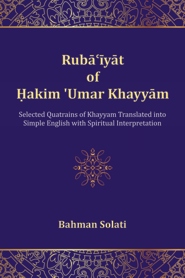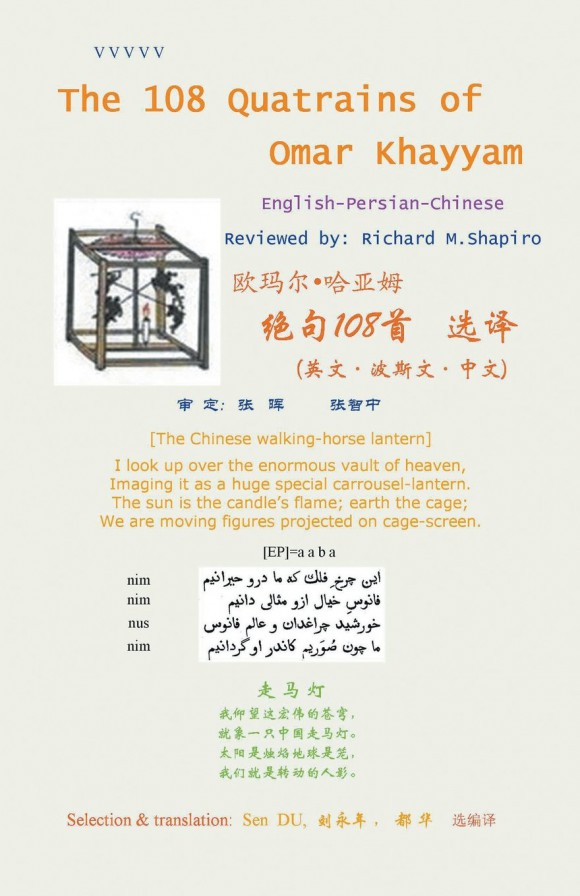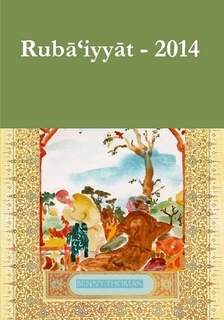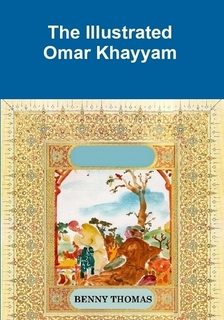 Omar Khayyam’s Secret: Hermeneutics of the Robaiyat in Quantum Sociological Imagination is the title of a twelve-book series in which the transdisciplinary sociologist Mohammad H. Tamdgidi shares the results of his decades-long research on Omar Khayyam. Tamdgidi’s purpose has been to find definitive answers to the many puzzles still surrounding Khayyam, especially regarding the existence, nature, and purpose of the Robaiyat in his life and works. To explore the questions posed, he advances a new hermeneutic method of textual analysis, informed by what he calls the quantum sociological imagination, to gather and study all the attributed philosophical, religious, scientific, and literary writings of Khayyam.
Omar Khayyam’s Secret: Hermeneutics of the Robaiyat in Quantum Sociological Imagination is the title of a twelve-book series in which the transdisciplinary sociologist Mohammad H. Tamdgidi shares the results of his decades-long research on Omar Khayyam. Tamdgidi’s purpose has been to find definitive answers to the many puzzles still surrounding Khayyam, especially regarding the existence, nature, and purpose of the Robaiyat in his life and works. To explore the questions posed, he advances a new hermeneutic method of textual analysis, informed by what he calls the quantum sociological imagination, to gather and study all the attributed philosophical, religious, scientific, and literary writings of Khayyam.
Four volumes have been published until now:
- Book 1: New Khayyami Studies. Quantumizing the Newtonian Structures of C. Wright Mills’s Sociological Imagination for A New Hermeneutic Method.
ISBN-13: 9781640980020 (hard cover)
ISBN-13: 9781640980037 (soft cover) - Book 2: Book 2: Khayyami Millennium: Reporting the Discovery and the Reconfirmation of the True Dates of Birth and Passing of Omar Khayyam (AD 1021-1123)
ISBN-13: 9781640980068 (hard cover)
ISBN-13: 9781640980075 (soft cover) - Book 3: Khayyami Astronomy: How Omar Khayyam’s Newly Discovered True Birth Date Horoscope Reveals the Origins of His Pen Name and Independently Confirms His Authorship of the Robaiyat.
ISBN-13: 9781640980143 (hard cover)
ISBN-13: 9781640980150 (soft cover) - Book 4: Khayyami Philosophy: The Ontological Structures of the Robaiyat in Omar Khayyam’s Last Written Keepsake Treatise on the Science of the Universals of Existence.
SBN-13: 9781640980181 (hard cover)
ISBN-13: 9781640980198 (soft cover)
In volume 3, chapter VII, Tamdgidi translates and discusses fifty representative quatrains that in his view offer “intersectional illustration in their meaning of the findings of this study so far”. Numbers are added to (almost) each of these quatrains indicating corresponding quatrains in other sources, such as Avery (1979), Hedayat (1925), Dashti (1966), Tirtha (1941), Whinfield (1883) and FitzGerald.
For more information see: OKCIR
 English with spiritual interpretation. Edited and translated by Bahman Solati. Boca Raton, Universal-publishers, 2015. 109 pp. ISBN: 978-1-62734-033-5.
English with spiritual interpretation. Edited and translated by Bahman Solati. Boca Raton, Universal-publishers, 2015. 109 pp. ISBN: 978-1-62734-033-5.
 Michael Skau, emeritus professor with the University of Nebraska at Omaha, recently published an article in the Journal of Popular Culture titled: “Jack Kerouac’s Rubáiyát: The Influence of Omar Khayyám” (vol. 48, No. 3, 2015).
Michael Skau, emeritus professor with the University of Nebraska at Omaha, recently published an article in the Journal of Popular Culture titled: “Jack Kerouac’s Rubáiyát: The Influence of Omar Khayyám” (vol. 48, No. 3, 2015).

 In a recent volume Khodadad Kaviani, associate professor at Central Wahington University, defines Khayyaamism as “a particular worldview that (l) questions the legitimacy of religious practices and beliefs that are contrary to reason; (2) views death as part of life; (3) promotes the enjoyment of life here and now; (4) values camaraderie and friendship; and (5) expresses ideas in short poems.” As a young man, Kaviani left his country in 1979, and had to find his way in the USA. Reading Iranian poetry helped him to stay in touch with his cultural roots, and in Khayyaamism, he would find advice on “how to be a friend, what to do with money, why religion is not all that’s cracked up to be, and much more.”
In a recent volume Khodadad Kaviani, associate professor at Central Wahington University, defines Khayyaamism as “a particular worldview that (l) questions the legitimacy of religious practices and beliefs that are contrary to reason; (2) views death as part of life; (3) promotes the enjoyment of life here and now; (4) values camaraderie and friendship; and (5) expresses ideas in short poems.” As a young man, Kaviani left his country in 1979, and had to find his way in the USA. Reading Iranian poetry helped him to stay in touch with his cultural roots, and in Khayyaamism, he would find advice on “how to be a friend, what to do with money, why religion is not all that’s cracked up to be, and much more.”

